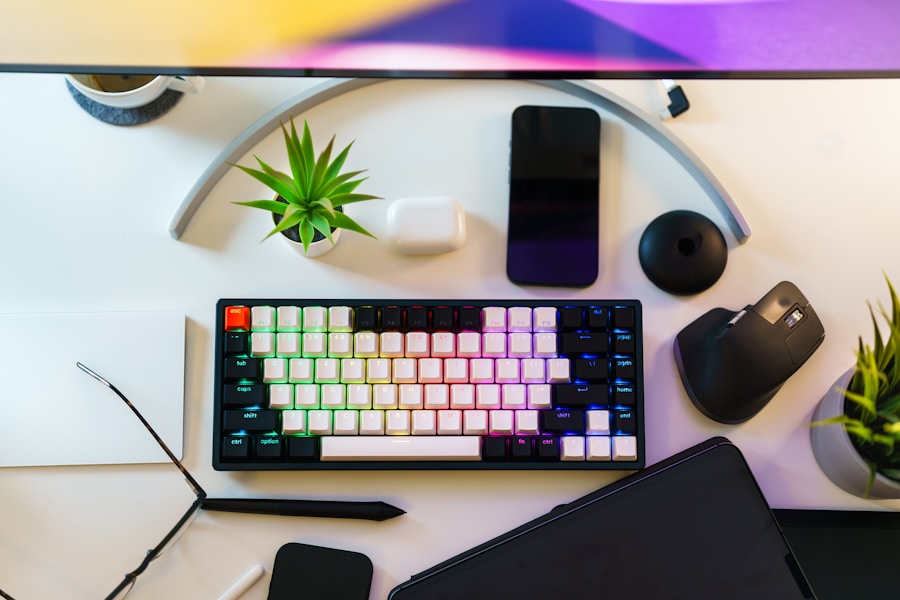Breaking into the Digital Art Freelance Scene: Essential Tips and Tricks
The digital art freelance scene is a vibrant and competitive industry that offers a wide range of opportunities for talented artists. With the rise of digital media and the internet, the demand for digital art has grown exponentially, creating a thriving market for freelance artists to showcase their skills and creativity. Understanding the digital art freelance scene involves recognizing the various platforms and avenues available for artists to showcase their work, such as social media, online marketplaces, and freelance websites. It also involves understanding the different types of digital art, including illustration, graphic design, animation, and digital painting, and how these can be applied to various industries such as advertising, publishing, gaming, and film.
In addition, understanding the digital art freelance scene also requires knowledge of the latest trends and technologies in the industry, as well as an understanding of the needs and preferences of potential clients. This includes staying up-to-date with software and tools used in digital art creation, as well as understanding the evolving demands of clients in different sectors. By understanding the digital art freelance scene, artists can position themselves to take advantage of the numerous opportunities available in this dynamic and fast-paced industry.
Building a Strong Portfolio
Building a strong portfolio is essential for any digital art freelancer looking to establish themselves in the industry. A portfolio is a showcase of an artist’s best work, demonstrating their skills, style, and versatility to potential clients. When building a portfolio, it’s important to curate a selection of work that highlights the artist’s strengths and expertise in different areas of digital art. This may include examples of illustration, graphic design, animation, and other forms of digital art, as well as demonstrating proficiency in various software and tools.
In addition to showcasing completed projects, a strong portfolio should also include works in progress, sketches, and concept art to give potential clients insight into the artist’s creative process and problem-solving abilities. It’s also important to keep the portfolio updated with new work and remove outdated or less relevant pieces to ensure it accurately represents the artist’s current skills and style. Building a strong portfolio is an ongoing process that requires dedication and attention to detail, but it is an essential tool for digital art freelancers to attract clients and showcase their talents.
Networking and Building Relationships
Networking and building relationships are crucial aspects of success in the digital art freelance scene. By connecting with other artists, industry professionals, and potential clients, freelancers can expand their opportunities and gain valuable insights into the industry. Networking can take place both online and offline, through social media platforms, industry events, and professional organizations. By engaging with other artists and industry professionals, freelancers can learn from others’ experiences, gain new perspectives, and potentially collaborate on projects.
Building relationships with clients is also essential for digital art freelancers. By providing excellent customer service, delivering high-quality work, and maintaining open communication, freelancers can build trust and loyalty with their clients, leading to repeat business and referrals. Additionally, satisfied clients can become valuable advocates for the freelancer’s work, helping to expand their network and reputation within the industry. By actively networking and building strong relationships, digital art freelancers can create a supportive community and increase their opportunities for success.
Pricing Your Work
Pricing your work is a critical aspect of being a successful digital art freelancer. Determining fair and competitive rates for your services requires careful consideration of factors such as your skill level, experience, the complexity of the project, and the client’s budget. It’s important to research industry standards and market rates for similar services to ensure that your pricing is competitive while also reflecting the value of your work. Additionally, freelancers should consider their overhead costs, such as software subscriptions, equipment, and self-employment taxes when setting their rates.
It’s also important to be transparent about your pricing with clients and clearly outline your fees and payment terms in your contracts or proposals. This helps to avoid misunderstandings or disputes down the line and ensures that both parties are on the same page regarding expectations. While it can be tempting to underprice your work to secure projects, it’s important to value your skills and time appropriately to sustain a successful freelance career. By carefully considering all relevant factors and confidently pricing your work, digital art freelancers can establish themselves as professionals in the industry.
Marketing Yourself and Your Art
Marketing yourself and your art is essential for digital art freelancers to attract clients and stand out in a competitive market. This involves creating a strong online presence through a professional website or portfolio, as well as utilizing social media platforms to showcase your work and engage with potential clients. It’s important to regularly update your online profiles with new work, behind-the-scenes content, and insights into your creative process to keep your audience engaged and informed about your skills.
In addition to online marketing, freelancers can also explore traditional marketing methods such as attending industry events, participating in art fairs or exhibitions, or collaborating with other artists or businesses to reach new audiences. By actively promoting yourself and your art through various channels, you can increase your visibility within the industry and attract potential clients who are seeking your specific skills and style. Marketing yourself effectively requires consistency, creativity, and a clear understanding of your target audience’s preferences and needs.
Managing Your Time and Workflow
Managing your time and workflow is crucial for digital art freelancers to stay organized, productive, and meet deadlines effectively. This involves creating a schedule or routine that allows for dedicated time for creative work, client communication, administrative tasks, and personal time. By setting clear boundaries between work and personal life, freelancers can maintain a healthy work-life balance while also ensuring that they have sufficient time to focus on their creative projects.
In addition to time management, freelancers should also establish efficient workflows for their creative process, including setting up file organization systems, utilizing project management tools or software, and establishing clear communication channels with clients. By streamlining their workflow, freelancers can minimize distractions and maximize their productivity while delivering high-quality work within deadlines. Effective time management and workflow management are essential skills for digital art freelancers to maintain their professional reputation and sustain a successful freelance career.
Staying Inspired and Continuing to Learn
Staying inspired and continuing to learn are essential for digital art freelancers to grow creatively and professionally in the industry. This involves seeking inspiration from various sources such as nature, art history, pop culture, or other artists’ work to fuel creativity and develop new ideas for projects. Additionally, continuing education through workshops, online courses, or mentorship programs can help freelancers stay updated with the latest trends, techniques, and technologies in the industry.
By staying inspired and continuing to learn, freelancers can expand their skills, experiment with new styles or mediums, and adapt to evolving client demands. This not only keeps their work fresh and relevant but also demonstrates their commitment to growth and improvement as artists. Staying inspired also involves taking breaks when needed to avoid burnout and maintaining a healthy work-life balance. By prioritizing self-care and personal growth alongside professional development, digital art freelancers can sustain their passion for their craft while achieving long-term success in the industry.
In conclusion, understanding the digital art freelance scene involves recognizing the various platforms available for artists to showcase their work while staying up-to-date with industry trends. Building a strong portfolio is essential for attracting clients by showcasing an artist’s best work while networking helps expand opportunities within the industry. Pricing your work fairly reflects the value of your skills while marketing yourself effectively increases visibility within the industry. Managing time efficiently ensures productivity while staying inspired fuels creativity for continued success as a digital art freelancer.




